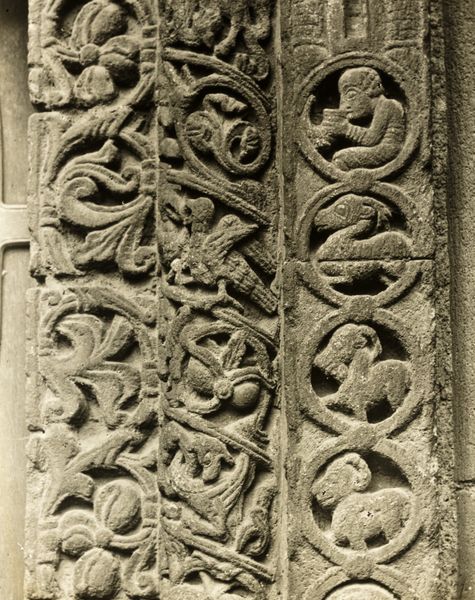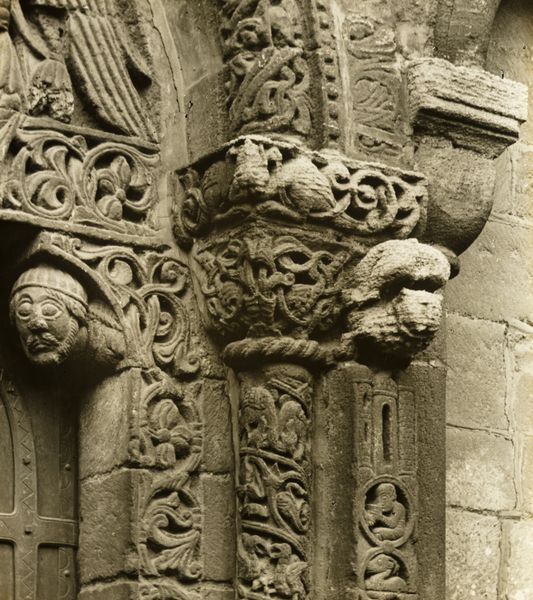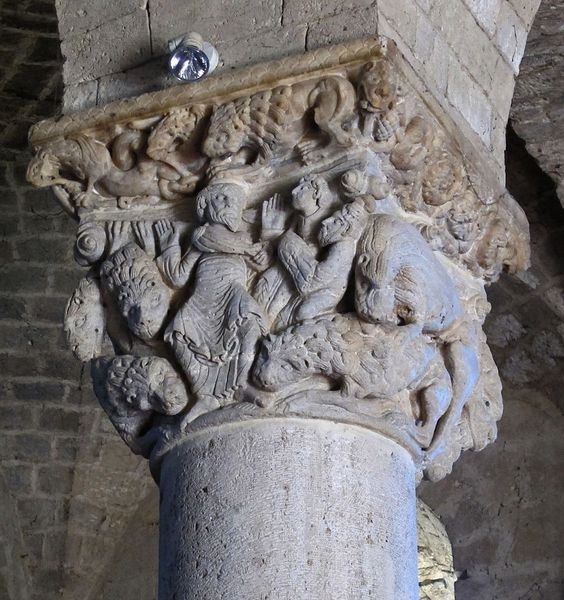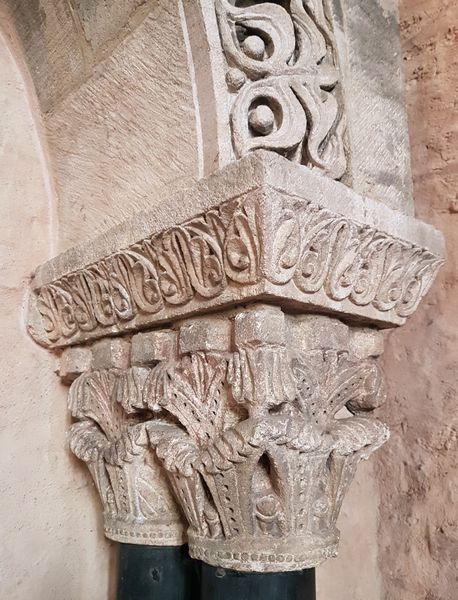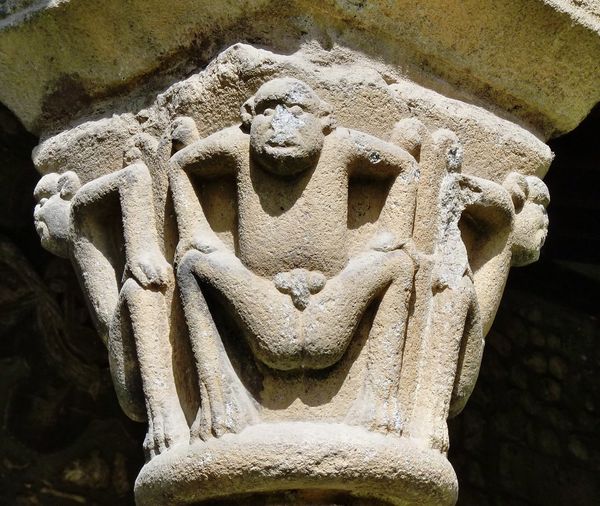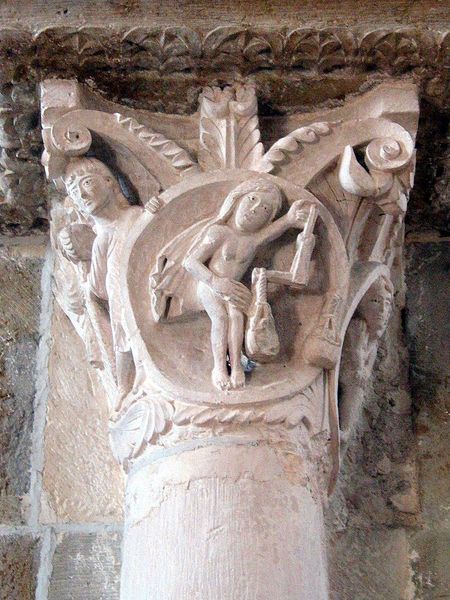
carving, relief, sculpture, architecture
#
medieval
#
carving
#
relief
#
romanesque
#
sculpture
#
architecture
Copyright: Public domain
This capital was carved from stone during the Romanesque period, sometime between 1000 and 1250, as part of the Rotunda of San Tomè in Bergamo, Italy. During the Romanesque era, art served as a didactic tool for a largely illiterate population, often reflecting the socio-political hierarchies of the time. The figures carved on this capital, while simple in form, may represent biblical stories, moral lessons, or even local folklore. As a woman, I’m drawn to consider whether female figures are represented here, and if so, what roles they play. Does the sculpture reinforce traditional gender roles, or does it offer a more nuanced perspective? The crude carving style, typical of Romanesque art, conveys a sense of immediacy and emotional intensity. As we contemplate these figures, consider the historical and cultural context in which they were created. What stories do they tell us about the beliefs, values, and daily lives of the people who lived during this time?
Comments
No comments
Be the first to comment and join the conversation on the ultimate creative platform.



